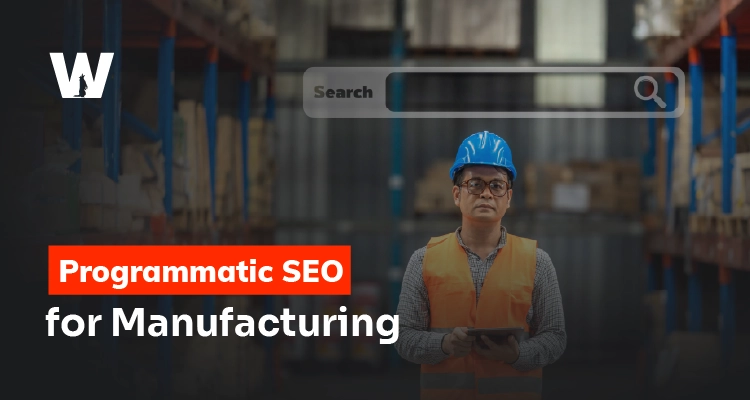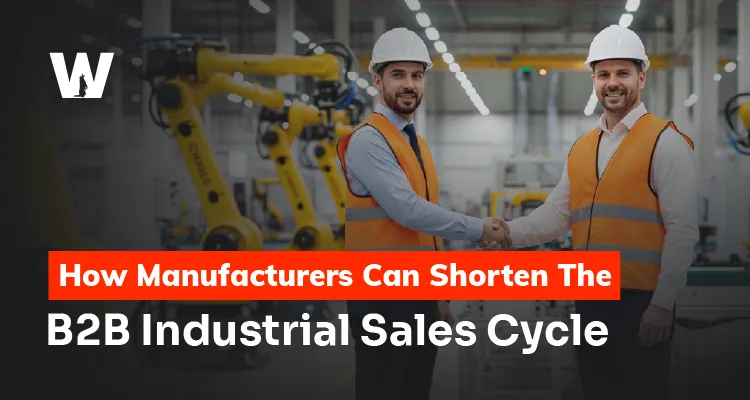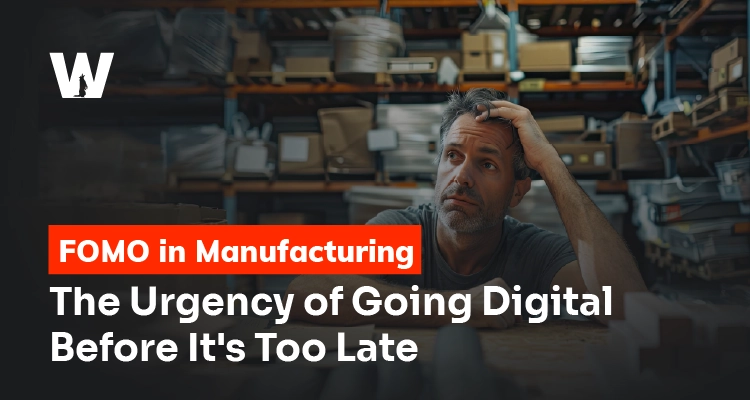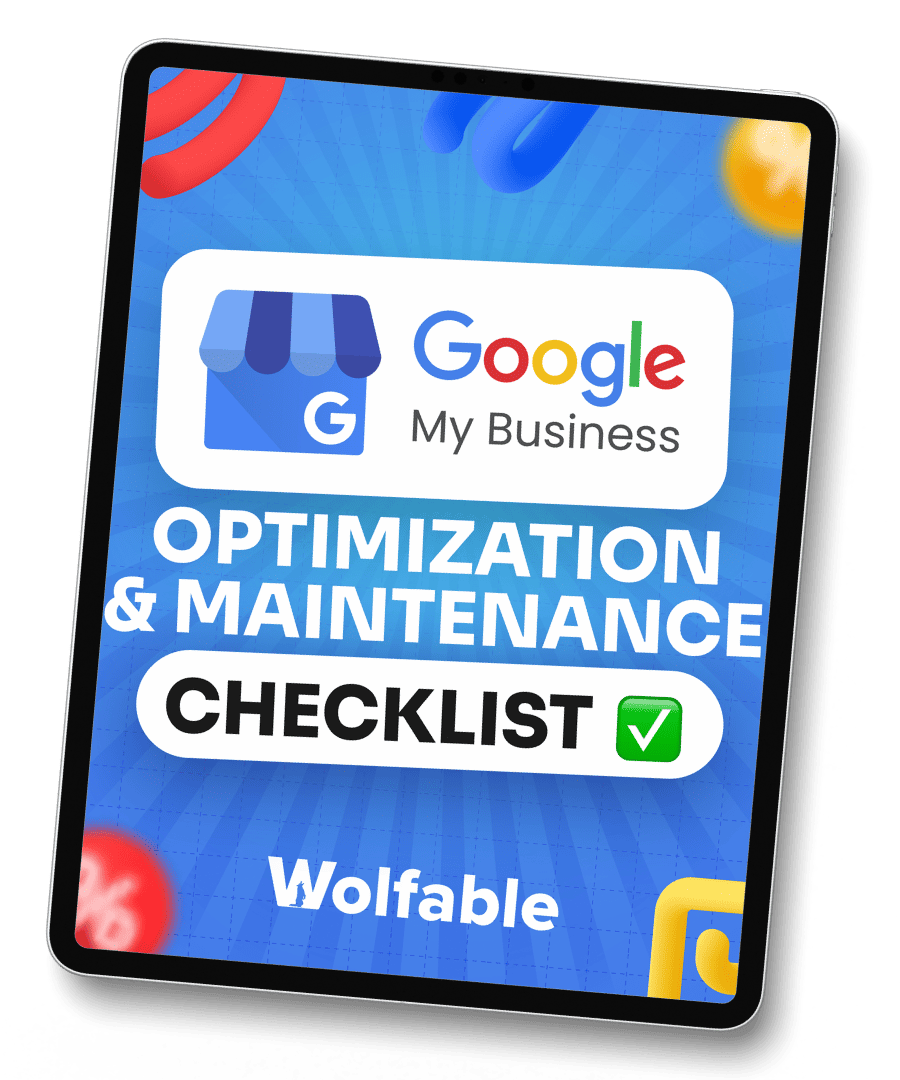Wraps up in 12 Minutes
If you work in manufacturing, you already know how competitive the industry can be.
You’ve got thousands of products, complex technical details, and distributors spread across regions.
But when potential customers search for your products online, are they finding you—or your competitors?
This is where programmatic SEO comes in. Instead of manually creating pages one by one, programmatic SEO allows you to build hundreds or even thousands of search-optimized pages at scale.
It uses templates, structured data, and automation to get your products and services in front of the right people when they’re searching.
In this article, you’ll learn exactly what programmatic SEO is, why it matters for manufacturers, and how you can use it to drive more organic leads.
What is Programmatic SEO?
Programmatic SEO is a method of creating large numbers of search-optimized web pages automatically, instead of building them manually one by one.
You start with a template, add structured data like product details or locations, and then generate pages at scale.
For example, consider companies in travel or real estate. They have thousands of listings.
Instead of writing every page from scratch, they use programmatic SEO to automatically generate pages for each city, property, or service.
For manufacturers, the concept is just as powerful. Instead of focusing on just your top 10 products, you could build optimized pages for every product variation, every industry you serve, or even every distributor location.
That means your website shows up when customers search for very specific needs—like “aluminum extrusion supplier in Ohio” or “custom injection molding for aerospace.”

Why Manufacturing Companies Need Programmatic SEO
Manufacturing websites face unique challenges.
You might have:
- A large product catalog with technical specs.
- Specialized industry applications.
- Multiple distributors or regional variations.
- Long buying cycles where decision-makers research in detail before they ever contact sales.
Many manufacturers still rely heavily on trade shows, sales reps, and paid ads. But here’s the truth: most B2B buyers now start their journey online.
If your website isn’t showing up in search results, you’re missing opportunities.
Programmatic SEO helps close that gap. It allows you to expand your reach, capture long-tail keywords, and make sure your products are visible when buyers are searching.
That leads to more inbound leads, stronger brand trust, and even reduced ad spend because you’re not relying only on paid channels.
Key Elements of a Successful Programmatic SEO Strategy
If you’re thinking about implementing programmatic SEO, here are the main pieces to focus on:
Keyword Research at Scale
You need to uncover the long-tail keywords your buyers are using.
Instead of just targeting “stainless steel fasteners,” think about phrases like “stainless steel fasteners supplier in Texas” or “bulk stainless fasteners for construction.”
Tools like keyword clustering platforms can help you identify these opportunities at a scale.
Scalable Page Templates
Templates are the backbone of programmatic SEO.
They let you create consistent, optimized pages for products, industries, or locations. For example, you can build one template for distributor pages and then replicate it for every region you serve.
Structured Data & Schema Markup
Manufacturers benefit from adding schema markup to pages.
By including product specifications, certifications, or even technical documents in your schema, search engines better understand your content and reward you with rich snippets.
Internal Linking & Navigation
With thousands of pages, navigation matters.
Programmatic SEO requires a thoughtful internal linking strategy so users and search engines can easily move between categories, industries, and product pages.
Content Enrichment
The biggest risk with programmatic SEO is creating “thin” content.
To avoid this, you need to enrich each page with useful details: FAQs, product specs, industry use cases, case studies, certifications, and visuals like datasheets or videos. This adds real value and helps your pages stand out.
How to Implement Programmatic SEO in Manufacturing
Here’s a step-by-step way to roll out programmatic SEO for your manufacturing business:
- Audit your site and product database – Make sure your product information is complete and accurate.
- Collect and clean your data – Organize your product specs, industries served, and locations into a structured format.
- Map keywords to templates – Assign long-tail keywords to product, industry, and location-based templates.
- Build page templates – Create dynamic templates in your CMS for products, solutions, and distributor pages.
- Add schema markup – Use product schema and other structured data to help search engines understand your content.
- Quality check – Review pages for duplicates, errors, and usefulness.
- Launch and monitor – Once live, track performance through Google Search Console and analytics.
When done right, this process can transform your website from a small brochure site into a massive lead-generating machine.
KPIs for Programmatic SEO in Manufacturing
How do you know your programmatic SEO efforts are paying off?
Here are the key metrics to track:
- Indexed pages growth – Are more of your pages appearing in Google’s index?
- Organic impressions & clicks – Are more people finding you in search results?
- Conversions – Are those visitors filling out forms, requesting quotes, or contacting sales?
- Keyword rankings – Are you ranking for long-tail product and industry terms?
- Engagement metrics – Do people spend time on your pages, or do they bounce quickly?
Remember, programmatic SEO is not an overnight win. It usually takes 3–6 months before you see significant traction, but the long-term payoff is huge.
Why Choose Wolfable for Programmatic SEO in Manufacturing
Implementing programmatic SEO on your own can feel overwhelming. That’s where Wolfable comes in.
At Wolfable, we specialize in helping manufacturing companies unlock the power of programmatic SEO.
We understand the unique challenges you face—technical products, complex buyer journeys, and massive catalogs. Our team builds tailored strategies that not only generate thousands of optimized pages but also make sure each one provides real value to your audience.
Here’s how we can help you:
- Develop scalable, SEO-friendly templates for your products, industries, and locations.
- Organize and optimize your technical product data.
- Add schema markup to maximize visibility in search.
- Design content that drives leads—not just traffic.
By partnering with Wolfable, you can transform your website into a scalable lead-generation engine. Instead of wondering if buyers can find you online, you’ll know your business is showing up right where they’re searching.
Conclusion
Programmatic SEO is one of the most powerful ways for manufacturers to drive organic growth.
By creating search-optimized pages at scale, you can increase visibility, attract more qualified leads, and build long-term credibility in your industry.
But success isn’t just about scale—it’s about strategy and execution. That’s why working with experts like Wolfable can help you avoid pitfalls and maximize your results.
If you’re ready to turn your website into a growth engine, now is the time to act.
Reach out to Wolfable today and see how programmatic SEO can transform your manufacturing business.









